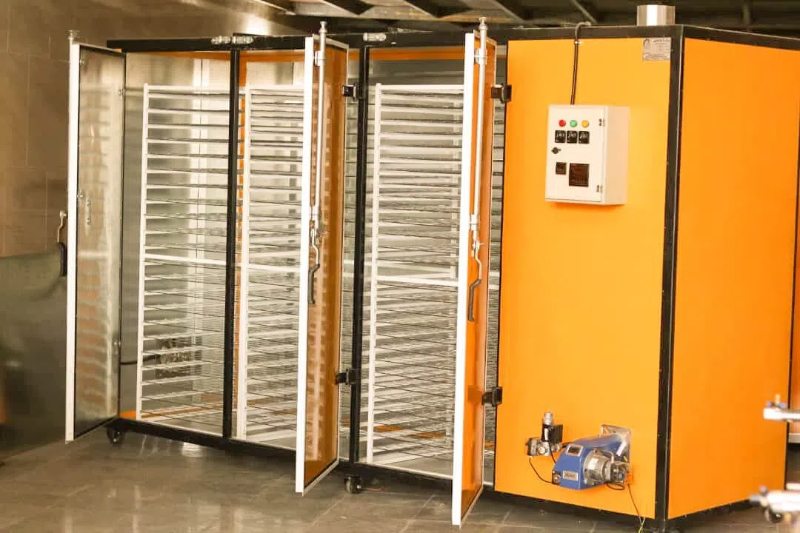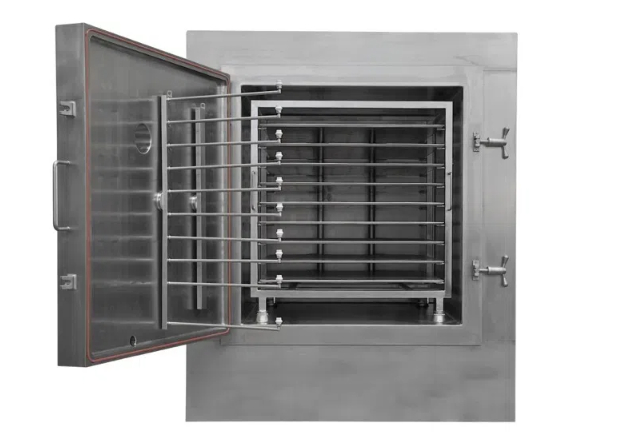
Content Menu
● What is a Cabinet Dryer?
● Benefits of Using a Cabinet Dryer
● Applications in Food Processing
● How Cabinet Dryers Work
● Choosing the Right Cabinet Dryer
● Maintenance Tips for Cabinet Dryers
● Conclusion
● FAQ
>> 1. What types of foods can be dried using a cabinet dryer?
>> 2. How does a cabinet dryer differ from other drying methods?
>> 3. Are cabinet dryers energy-efficient?
>> 4. How long does it take to dry food in a cabinet dryer?
>> 5. Can I use a cabinet dryer for commercial purposes?
● Citations:
Cabinet dryers, also known as cabinet dehydrators, are essential equipment in the food processing industry. They provide an efficient and effective way to remove moisture from various food products, extending their shelf life and enhancing their flavors. This article explores the numerous benefits of using a cabinet dryer, detailing how they work, their applications, and why they are a valuable investment for food manufacturers.

What is a Cabinet Dryer?
A cabinet dryer is a type of drying equipment designed to reduce the moisture content of food products. It consists of an enclosed chamber where food items are placed on stainless steel trays. Heated air circulates within this chamber, evaporating moisture from the food while maintaining a controlled environment. This method ensures that the drying process is uniform and efficient.
Key Features:
- Enclosed Chamber: Protects food from external contaminants.
- Temperature Control: Allows for precise adjustments to optimize drying conditions.
- Energy Efficiency: Modern designs utilize heat pump technology to reduce energy consumption.
Benefits of Using a Cabinet Dryer
1. Improved Food Quality
- Cabinet dryers maintain consistent temperatures, which helps preserve the natural flavors, colors, and nutrients of food products. This is particularly important for fruits and vegetables, where high temperatures can degrade quality. For example, dried apples retain their vibrant color and sweet flavor when dried at optimal temperatures.
2. Energy Efficiency
- Compared to traditional drying methods, cabinet dryers consume significantly less energy. Advanced models use heat pump technology to operate at lower temperatures while achieving faster drying times. This not only reduces operational costs but also minimizes environmental impact.
3. Versatility
- Cabinet dryers can handle a wide range of products, including fruits, vegetables, herbs, meats, and seafood. Their adjustable settings allow users to tailor the drying process to specific food types and moisture levels. This versatility makes them suitable for various industries such as agriculture, culinary arts, and even home use.
4. Uniform Drying
- The design of cabinet dryers ensures that air circulation is optimized throughout the chamber, leading to uniform drying across all trays. This consistency is crucial for maintaining product quality and reducing waste due to uneven drying. For instance, when drying herbs like basil or oregano, uniformity in moisture removal ensures that all leaves maintain their flavor profile.
5. Ease of Use
- Most cabinet dryers are designed for user-friendly operation. Features such as digital controls for temperature and humidity make it simple for operators to set and monitor drying conditions. Additionally, many models come with preset programs tailored for specific foods, further simplifying the process.
6. Reduced Spoilage
- By effectively removing moisture from food products, cabinet dryers help prevent spoilage and extend shelf life. This is particularly beneficial for businesses looking to store or transport dried goods over long periods. For example, dried fruits can last up to a year or more when properly dehydrated.
7. Cost-Effectiveness
- While the initial investment in a cabinet dryer may be higher than other drying methods, the long-term savings on energy costs and reduced waste make it a cost-effective solution for food processing operations. The ability to produce high-quality dried products can also lead to increased sales and customer satisfaction.
8. Health Benefits
- Dried foods can be healthier alternatives to snacks that contain preservatives or artificial ingredients. By using a cabinet dryer, manufacturers can create natural snacks that appeal to health-conscious consumers looking for nutritious options.
Applications in Food Processing
Cabinet dryers are widely used in various sectors of the food industry:
- Fruit and Vegetable Drying: Ideal for producing dried snacks or ingredients for soups and sauces.
- Herb Drying: Preserves the flavor and potency of herbs without compromising quality.
- Meat Processing: Used for making jerky or dried meats while ensuring safety through proper moisture removal.
- Seafood Drying: Essential for producing dried fish products that have extended shelf lives.
- Snack Production: Many companies use cabinet dryers to create healthy snack options like vegetable chips or fruit leathers.
How Cabinet Dryers Work
The operation of a cabinet dryer involves several key steps:
1. Loading: Food items are placed on trays within the dryer.
2. Heating: The dryer heats air to a specified temperature.
3. Circulation: Heated air circulates around the trays, evaporating moisture from the food.
4. Exhaust: Moist air is expelled from the chamber, allowing fresh air to enter.
5. Cooling (if necessary): After drying, some models include cooling features to stabilize product temperature before removal.
Choosing the Right Cabinet Dryer
When selecting a cabinet dryer for your business or home use, consider the following factors:
- Capacity: Determine how much product you plan to dry at one time and choose a model that meets your needs.
- Temperature Range: Ensure the dryer has adjustable temperature settings suitable for different types of foods.
- Energy Efficiency Ratings: Look for models with good energy ratings to save on electricity costs over time.
- Build Quality: Stainless steel construction is preferred for durability and ease of cleaning.
- User Reviews: Research customer feedback on performance and reliability before making a purchase.

Maintenance Tips for Cabinet Dryers
To ensure your cabinet dryer operates efficiently and lasts longer:
1. Regular Cleaning: Keep the interior clean by wiping down surfaces after each use to prevent residue buildup.
2. Check Seals: Inspect door seals regularly to ensure they are intact; damaged seals can lead to energy loss.
3. Monitor Temperature Settings: Periodically check that temperature settings are accurate using an external thermometer.
4. Follow Manufacturer Guidelines: Always refer to the manufacturer's instructions for maintenance protocols specific to your model.
Conclusion
Cabinet dryers represent an invaluable asset in modern food processing facilities. Their ability to enhance product quality while reducing energy consumption makes them a preferred choice among manufacturers. By investing in a cabinet dryer, businesses can improve their operational efficiency and product offerings significantly while catering to health-conscious consumers with high-quality dried foods.

FAQ
1. What types of foods can be dried using a cabinet dryer?
Cabinet dryers can be used for various foods including fruits, vegetables, meats, herbs, and seafood.
2. How does a cabinet dryer differ from other drying methods?
Cabinet dryers provide controlled environments with precise temperature settings, ensuring uniform drying compared to other methods that may lack this control.
3. Are cabinet dryers energy-efficient?
Yes, modern cabinet dryers utilize advanced technologies such as heat pumps that significantly reduce energy consumption while maintaining effective drying processes.
4. How long does it take to dry food in a cabinet dryer?
Drying times vary based on the type of food and its moisture content but typically range from several hours to a full day.
5. Can I use a cabinet dryer for commercial purposes?
Absolutely! Cabinet dryers are designed for both small-scale and large-scale operations in commercial food processing environments.
Citations:
[1] https://aradmachineryco.com/catproduct/Cabinet-dryer
[2] https://making.com/technologies/industrial-cabinet-dryers
[3] https://patents.google.com/patent/CN110207480A/zh
[4] https://gcwgandhinagar.com/econtent/document/1588156026Unit%20V%20Types%20of%20dryers%20and%20their%20applications.pdf
[5] https://ebooks.inflibnet.ac.in/ftp02/chapter/dryers-used-in-food-industry/
[6] https://patents.google.com/patent/CN201919616U/zh
[7] https://making.com/equipment/energy-saving-cabinet-dryer-for-food
[8] https://www.duexindustrialsystems.com/cabinet-dryer-9014175.html
[9] https://www.dryzonecabinet.com/are-industrial-drying-cabinets-worth-it.html
[10] https://pmc.ncbi.nlm.nih.gov/articles/PMC4519484/
[11] https://www.foodengineeringmag.com/articles/87608-cabinet-dryers











